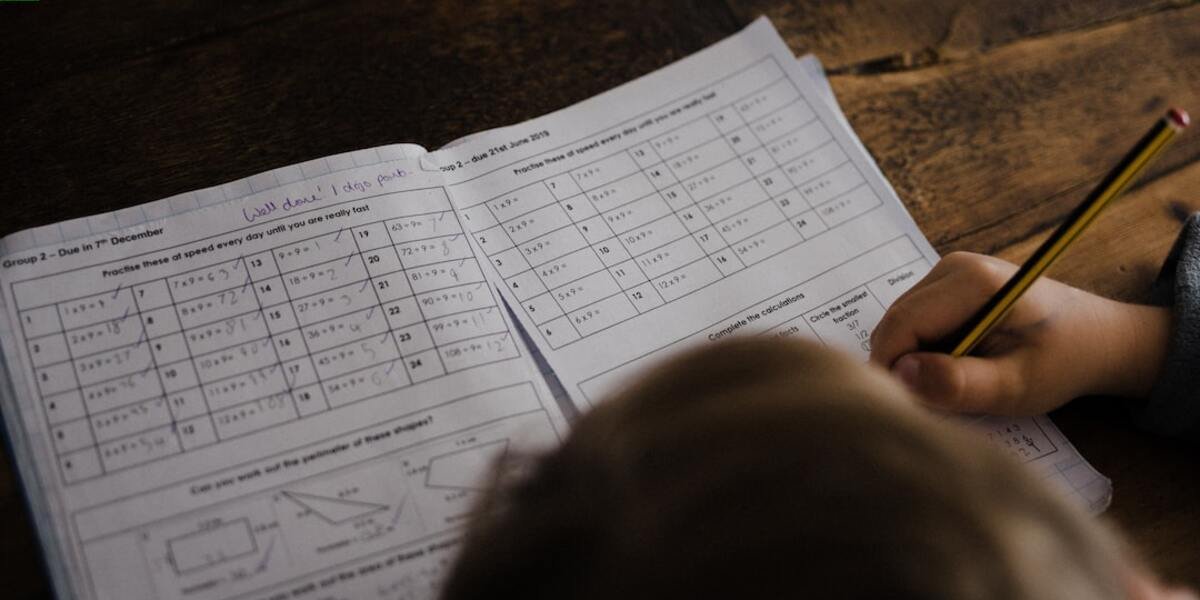How Old Are Elementary School Students: Understanding the Basic Education Structure
Knowing “how old are elementary school students” is a common query among parents and educators alike. This pertains not just to the age bracket but also delves into understanding the basic structure of education that these young minds undergo. Having this knowledge helps determine how best to guide them through their learning journey; whether it’s choosing appropriate educational materials or identifying suitable teaching methods.
This blog post further explores this topic, providing insights about home schooling and its relation to standard education systems worldwide. By exploring various factors such as curriculum design, pedagogical strategies, emotional maturity levels required at each grade level we will attempt to give you a comprehensive view on understanding elementary school student ages in context.
Did you know?
Surprisingly, the average age for a student to start elementary school across most countries is six years old, however in Finland – hailed globally for its effective education system – children don’t commence primary education until seven.
Understanding the Age Range of Elementary School Students
Elementary school is a fundamental phase in a child’s education, so it’s crucial for parents and educators to understand how old students typically are during their elementary years. This age range serves as the foundation of childhood learning; thus, understanding it can significantly impact our approach towards that vital stage.
Traditionally, elementary schooling commences when children are at least five or six years old (in kindergarten), extending through grades one to five or six which roughly translates into ages 5-12. These brackets may vary slightly based on different educational systems globally but essentially fall within this realm.
Recognizing these age parameters provides more profound insights about teaching methods suitable for home-schooling contexts while focusing on targeted educational objectives aligned with each developmental stage. It aids us in devising curriculum that caters uniquely to each child’s cognitive capabilities considering their tender yet impressionable minds— where skills aren’t just learned but habits, values and character molded too.
The Typical Ages from Kindergarten to 5th Grade
Gaining a clear understanding of the typical ages for elementary school students, from kindergarten to fifth grade, is integral when it comes to planning their education. This knowledge aids in curating age-appropriate activities and learning modules that contribute significantly towards a child’s growth.
Kindergarten usually welcomes children who have turned five by August or September at the start of the academic year. Here, kindergarteners learn primary skills such as shapes and colors recognition while focusing on socialization basics too.
The second-grade band typically includes pupils aged seven to eight years old where they encounter accelerated lesson plans building upon what was taught previously. These young learners tread into deeper waters diving further into subjects all over again but in greater detail!
When your little ones reach third grade around about nine or ten years old, they start venturing onto a higher level of academics including logic-based problems within math computations work along with exploratory science introductions.
Developmental Milestones in Early Education Years
Elementary school marks a significant period in your child’s education journey. It is during these formative years that students between the ages of 6 and 10 undertake critical developmental tasks which set a foundation for their future learning experiences.
When we think about “how old are elementary school students”, it’s essential to remember that this age range can be diverse with varying degrees of maturity, cognitive abilities, and educational needs. Thus, understanding the vital milestones at different points within early education becomes imperative.
One key aspect noticed amongst children aged six to seven includes concrete operational thinking where they begin realizing cause-and-effect relationships plus simple logical reasoning skills become evident. These new mental capacities contribute significantly towards shaping their numeric literacy as well as reading comprehension capacity.
By eight or nine years old, independence begins taking more shape among kids in this category. They start completing assignments on their own without needing much adult supervision – an indication of developed task management skill sets pertinent later in life when juggling multiple responsibilities simultaneously becomes necessary.
As one approaches ten years old nearing middle-school territory, there’s an increased ability to process complex information coupled with enhanced problem-solving capabilities – qualities that will aid them profoundly throughout secondary education phases subsequently leading into adulthood too!
Tailoring Home Schooling for Different Elementary Ages
In the realm of home schooling, understanding that elementary school students range in age is crucial. Typically, these children are between six to eleven years old, providing a vast landscape for varying developmental milestones and learning capabilities. Hence tailoring education becomes an essential aspect when it comes to creating effective plans.
When you opt for homeschooling your child who falls in this age bracket, remember they are inherently curious about their environment; conceptualizing lessons according to their evolving interests can make them more interactive and engaging. For example, using pretend play or narrative illustrations while teaching history might cater well for six-year-olds than traditional textbook methods.
Then again as we consider older elementary kids around ten or eleven-years-old – problem-solving skills begin sprouting predominantly at this stage; integrating such elements into educational activities would be beneficial. This approach not only helps strengthen foundational knowledge but also encourages independent thinking among young learners.
Each year brings forth new challenges yet opportunities to learn & grow both for parents and youngsters alike in their homeschooling journey through elementary grades – one that should celebrate diversity within its structure itself! So remember: flexibly modifying curriculum based on student’s individual personality traits & cognitive abilities plays a significant role here.
Crafting Curriculum for Younger Elementary Kids (5-7 years)
Understanding how old elementary school students are is crucial in crafting the perfect curriculum at home. The youngest learners, aged 5-7 years, fall into this category. These kids are still grappling with learning new concepts and can sometimes find them overwhelming.
For parents or guardians seeking to homeschool these budding minds, creating a specialized curriculum tailored just for their growth needs is essential for success in education. In the current year of 2023 amid constant changes within global schooling systems due to ongoing societal shifts including pandemics and wars, it’s ever more vital to carefully plan your child’s educational journey right from home.
When designing curriculums for younger elementary children (ages 5 through seven), focus on foundational subjects such as English language arts (ELA), math basics along with science explorations complemented with integrated art projects which make learning fun yet productive.
English Language Arts should be immersive but simple; engaging books that stir up curiosity while improving vocabulary would do wonders here. Don’t forget phonics – they’re fundamental building blocks of reading skills!
Children love numbers too – when presented correctly! For Math Basics incorporate playful activities like baking cookies where counting chocolate chips helps understand addition & subtraction while also measuring ingredients adds up familiarity numeral quantities subtly without pressure.
Adapting Teaching Strategies for Upper Elementary Learners (8-10 years)
Understanding the developmental stages of children is key in effectively tailoring home schooling strategies, especially for upper elementary learners aged 8-10 years. At this age group also known as ‘intermediate grade’ or ‘middle childhood’, students are more independent and capable of complex thought processes.
Elementary school students are not all at the same level cognitively, physically, and socially due to their diverse ages which can range from 5 to11 years old. If you’re wondering how old are elementary school students that fall under upper-elementary category – they’re typically between eight to ten years old.
So how do we adapt teaching strategies specifically for these older kids? Here’s your guide:
1. Encourage Independent Learning: As they grow, children become more comfortable with abstract thinking and problem-solving skills start honing. Incorporating activities that stimulate self-learning like research projects or science experiments can be effective during home-school lessons.
2. Use Interactive Methods: Rather than just reading out loud facts from books or instructing them verbally on what’s right or wrong; involve them actively by using interactive methods such as quizzes, online games related education content etc., These have shown great results thus far!
3.Focus More On Practical Concepts : With a natural inclination towards making sense of things around them by now being quite common among these particular age groups inferred , it becomes crucial then give enough impetus practical concepts over theoretical ones alone .
Evaluating Your Child’s Readiness for Elementary-Level Homeschooling
Elementary school years are a crucial period in your child’s academic life, particularly between the ages of 5 to 11. In homeschooling, understanding these formative years can be vital for parents looking into introducing structured education at home. It is essential that as you plan elementary-level homeschooling curriculums, it should not only match with their age but also test them according to their intellectual and emotional ability.
Assessing your child’s readiness for elementary-level homeschooling involves recognizing where they stand on cognitive milestones typically attributed to this age group. This does not solely lie in knowing bookish knowledge or rote learning but expanding towards critical thinking skills and problem-solving abilities which often begin developing during this phase. Incorporating activities that stimulate such comprehensive growth will help ensure an optimal educational experience within the cozy confines of home.
Yet, remember every kid goes through development stages differently; what works best for one might not suit another perfectly well even if they belong to almost same-age category – ‘elementary level’. Hence as parents turned educators switching from traditional classroom setting must pay heed closely observing how receptive children are adapting new mode teaching-learning process while nurturing innate curiosity facilitates non-pressurized yet progressive learning environment right under our very own roofs!
Assessing Emotional and Social Maturity Before Starting Homeschool
In the journey of homeschooling, understanding your child’s emotional and social maturity is a crucial step before starting. Typically, children in elementary school are between 5 to 11 years old. However, age alone should not be the determining factor when deciding whether or not to start elementary-level homeschooling.
The first aspect you want to consider is their Emotional readiness. Is your child able to handle structured assignments? Can they stay focused without losing interest quickly?
Children who display patience and can regulate their emotions may have an easier time adapting to a homeschooled environment.
Social Preparedness plays just as important role too. Homeschooling doesn’t mean total isolation—far from it—but identifying if your little one has adequate opportunities for peer interaction outside conventional schooling setups becomes paramount here.
Being observant of how comfortable they are interacting with peers during playdates or community events gives us insight into this area. A well-rounded diet of diverse social experiences ensure that even as home scholars, our kids don’t miss out on experiencing different perspectives and learnings through healthy competition & collaboration – essential life skills honed early!
Recognizing Academic Skills Necessary for Various Grades
Determining your child’s readiness for elementary-level homeschooling involves a careful evaluation of their academic skills pertinent to different grades. The most essential aspect is recognizing that age isn’t the only factor when it comes deciding “how old are elementary school students should be” – capability and maturity play significant roles too.
Firstly, observe if your budding scholar possesses basic literacy skills such as the ability to read simple sentences or books independently and write clearly in both lower and uppercase letters. In terms of arithmetic proficiency, they must grasp counting effectively up to 100 by ones and tens with understanding addition or subtraction using single digit numbers.
Secondly, consider their comprehension abilities. Can they follow multi-step instructions? Are they capable asking clarifying questions after reading a passage?
Their cognitive development at this stage could include being able to list items categorized under an overarching theme like animals/birds/trees etc., differentiate between fact/opinion among other critical thinking tasks.
Thirdly, assess how well your child performs within social-emotional parameters which can affect learning outcomes dramatically particularly in homeschool settings where direct peer interaction might be less frequent than traditional schooling environments . Look out for signs demonstrating emotional resilience (such as dealing constructively with failures), empathy towards others’ feelings/experiences , engagement during collaborative activities/tasks thereby indicating preparedness toward group work aspects integral part elemental curriculum design even while homeschooled potentially .
Conclusion
In wrapping up our discourse on “how old are elementary school students,” understanding the basic structure of education is key in supporting a child’s learning journey. Remember, being abreast with your child’s educational progression allows you to raise vital questions and concern at appropriate times which may ultimately determine the quality of their future.
We invite you to explore this platform further for more insightful articles that provide guidance on educating children effectively. Our content ranges from parent-educator collaboration strategies to support systems tailored explicitly for educators – all aimed at holistically promoting childhood education. With these resources, we hope guiding youngsters through their formative years will be less daunting and far more rewarding!







